El Nido Sanctuary
A Story of Connection to the Land and Sustainable Design. Take a tour of an Architects own home on the tropical Palawan Island of Philippines.
VIDEOS
1/2/20255 min leggere
In Palawan, Philippines, a unique home invites you to slow down, reconnect with nature, and embrace simplicity.
An Architects Home
This week we bring you our insights along with a home tour by Stacked Homes with Architect Justin Guiab to understand the story behind the home he created for his family, with his wife Sarah.
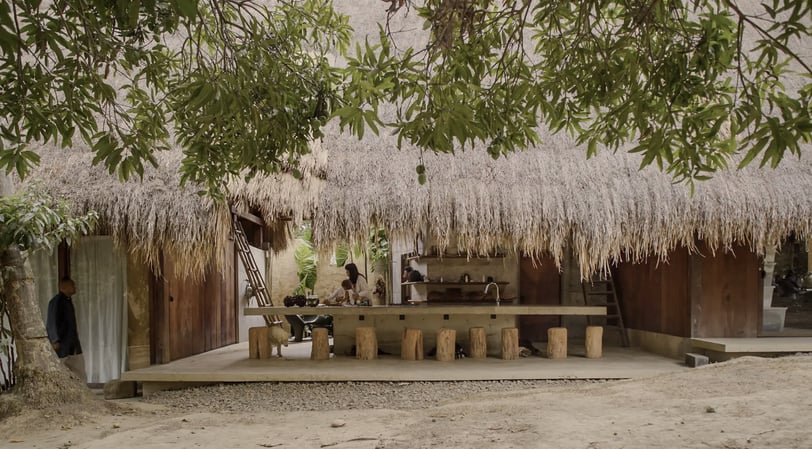

Shaped by the Natural Elements and Environment
From the very beginning, the natural environment and landscape played a pivotal role in the design of this home. The land, nestled in Happy Valley, offered a peaceful, remote setting with nearby waterfalls, a lake, and abundant wildlife. The Guiabs chose to preserve the existing trees on the property, allowing the natural landscape to dictate the placement and orientation of the house.
Justin spent considerable time studying the wind and sun patterns to ensure that the home would benefit from natural ventilation and lighting. The result is a house that invites the natural world inside through open spaces and thoughtful design choices. Gaps in the roof allow light to filter through, while the home’s orientation takes full advantage of the prevailing winds.
“I feel like every project has a life of its own,” Justin shares. “I kept asking the house what it wanted to be. Later, it told me where to build and what it could become.”
Materials with Meaning
The Guiabs chose to use humble, local materials to construct their home, reflecting a commitment to sustainability and cultural heritage. The house features wood, clay, rammed earth, and concrete—materials that are readily available in the Philippines.
Anotable choice was the use of endemic wood species. “Most wood planted in the Philippines are non-endemic species like mahogany or gmelina,” Justin explains. “These species grow faster but harm the ecosystem. We made a conscious decision to use native wood to preserve the natural balance.” Emphasizing the importance of using endemic wood species, particularly Ipil, which grows slowly but contributes to a healthier ecosystem he contrasts this with Mahogany plantations, which are lifeless and damaging to local wildlife. 'A small plot of land can support 3,000 trees, enough to build 1,500 homes that are carbon-negative and can last over a century,' he shares
The roof is made of cogon grass, a traditional material that provides excellent insulation against the tropical heat. Local craftsmen tied the cogon to the roof’s structure using rattan, following techniques passed down through generations. “It’s interesting to think how far back people have been building with these methods,” Justin reflects. “It could be hundreds or even thousands of years.”
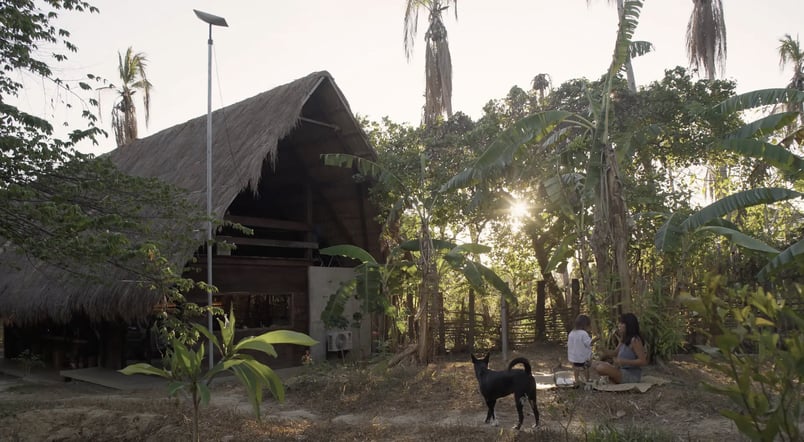

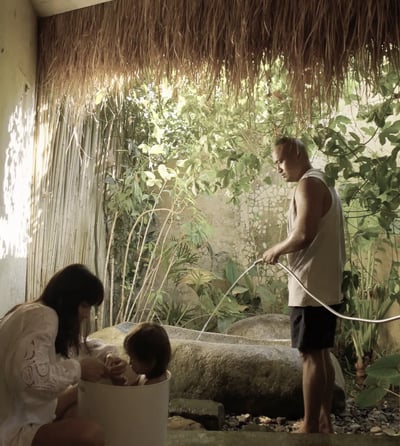

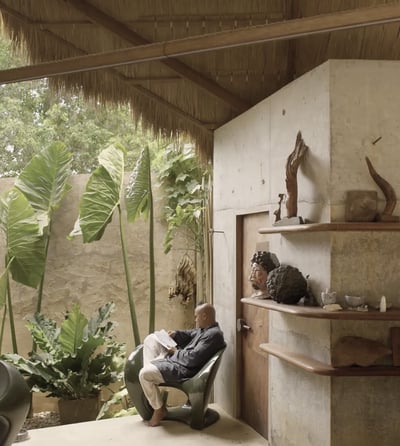

A Space for Family and Connection
The interior of the house is designed to foster connection and adaptability. The kitchen, dining, and living areas are combined into a single, multifunctional space centered around a large cantilevered table. This table serves as a kitchen counter, dining table, and workspace, embodying the family’s ethos of simplicity and utility.
Sarah shares how the design of the house reflects their shared values: “Justin made sure there are a lot of views, because I love nice views. Everything is open, and the plants are here. It might even be more suited to what I like than what he likes sometimes.”
When the couple found out they were expecting their son, Janu, the house evolved with their growing family. While initially not designed with baby-proofing in mind, the open layout and natural surroundings have proven to be a nurturing environment for a young child to grow up in.
A Home Open For All
One of the most distinctive features of the home is its openness to the surrounding environment. There is no main door—instead, visitors can enter from any level. The house flows naturally with the slope of the land, creating a seamless connection between the built and natural environments.
The bathroom, a particularly unique space, features a large rock from a nearby river that was carved into a basin over the course of three months. This space holds special meaning for the family, as it was where Sarah gave birth to their son. “Water has a powerful healing effect,” Justin says. “Every day when we shower in the morning, we get charged from the ions in the spring water.”
The home’s sustainable design extends to its water system. The family uses water from a nearby spring, which is clean enough to drink. A pocket garden filters the water from the bathrooms, using swamp taro plants that thrive in wet conditions.
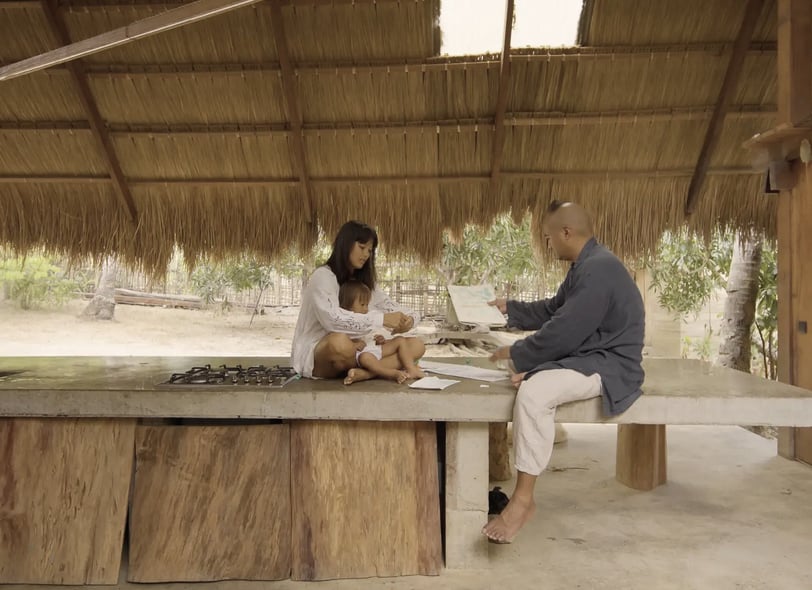

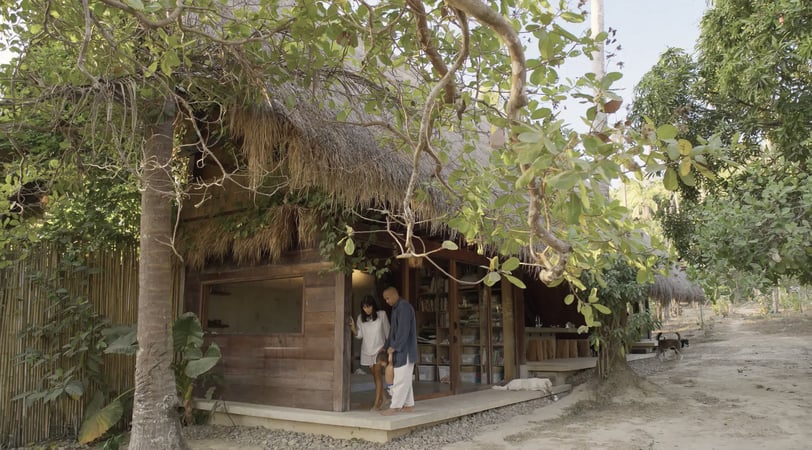

A Life of Simplicity and Gratitude
For the Guiabs, living in El Nido has been a transformative experience. The home, shaped by the surrounding environment and built with intention, has become a place of peace, creativity, and family connection.
“After living here for a while, it really feels like the perfect place to live and raise my family,” Justin shares. “We live here, but the insects and animals lived here before us. As they build their homes in our home, I feel happy to share it with them. This is really their space, and we’re just trying to coexist with them.”
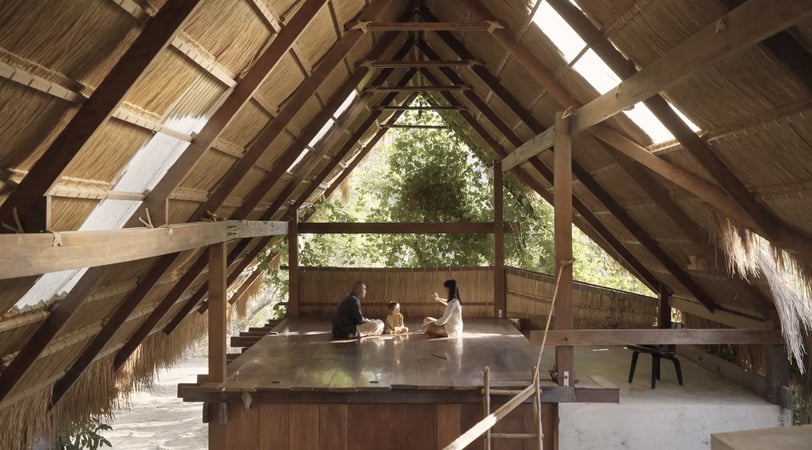

Video Tour by Stacked Homes
To experience the full journey through Justin and Sarah’s home, watch the video tour by Stacked Homes below. The tour offers an immersive look at the design and the stories behind it, bringing the essence of El Nido to life.

OAAK Final Thoughts
Justin and Sarahs home in El Nido is a testament to the power of thoughtful, sustainable design and the deep connections that can be formed when we live in harmony with the natural world. It shows that good design goes beyond aesthetics—it’s about creating spaces that reflect values, history, and the environment. The Guiabs’ story reminds us that homes can be places of learning, growth, and gratitude, where humans and nature can coexist in meaningful ways.
To learn more about Justin or to reach out Justin you can do so via his social account here.
All images credited to Stacked Homes Instagram @stackedhomes
View more stories
Exploring architecture, design, and compelling storytelling.
© 2024. OAAK. All rights reserved.
